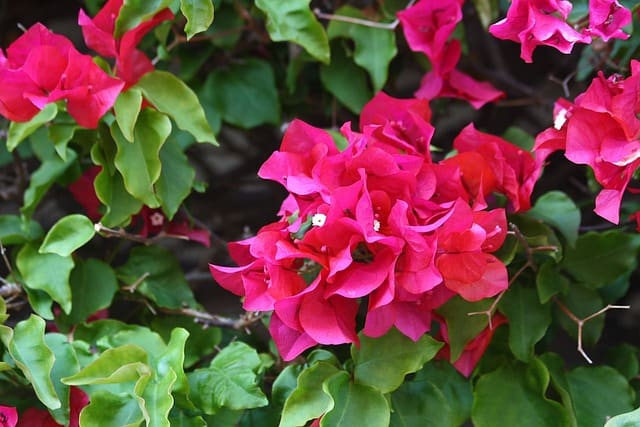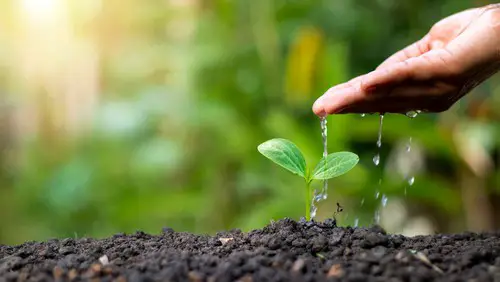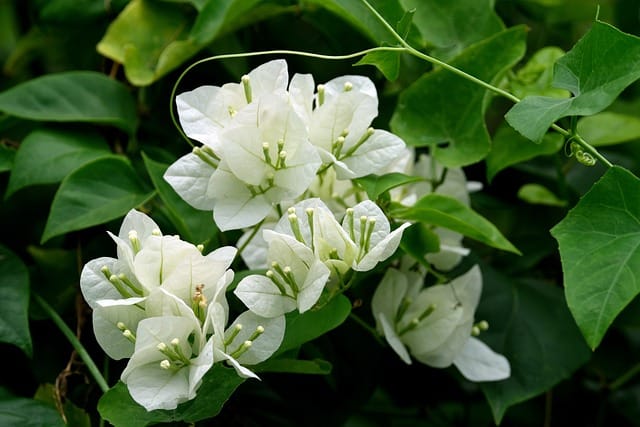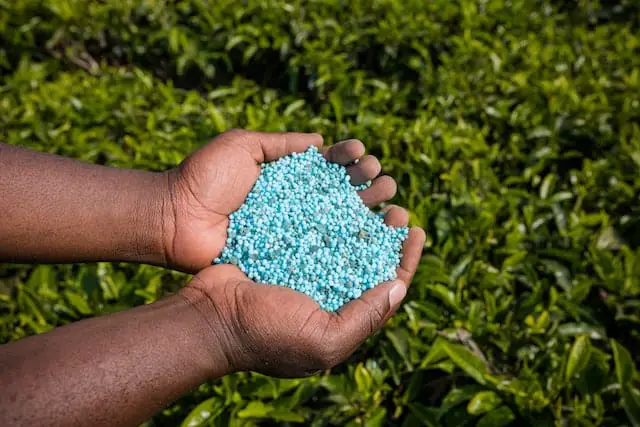Bougainvillea is a beautiful and vibrant plant that can add a touch of color to any garden or landscape. However, if you notice the leaves of your bougainvillea turning brown, it can be a cause for concern.
Brown leaves on bougainvillea can be an indication of a variety of issues, including overwatering, underwatering, pests, and diseases.
Understanding bougainvillea and its unique needs is essential in keeping it healthy and thriving. Bougainvillea is a tropical plant that loves sunlight and warmth. It requires well-draining soil and regular watering, but not too much.
Overwatering can lead to root rot and brown leaves, while underwatering can cause the leaves to dry out and turn brown.
In this article, we will explore the causes of bougainvillea leaves turning brown, common pests and diseases that can affect the plant, signs and symptoms to look out for, preventive measures you can take to keep your bougainvillea healthy, and treatment options if your plant is already affected.
We will also provide tips on how to care for your bougainvillea and common mistakes to avoid.
Key Takeaways
- Bougainvillea leaves turning brown can be caused by overwatering, underwatering, pests, or diseases.
- Understanding the unique needs of bougainvillea, such as sunlight and well-draining soil, is essential in keeping it healthy.
- Preventive measures, such as regular pruning and monitoring for pests, can help keep your bougainvillea thriving.
Similar posts:
- Bougainvillea Flowers Turning Brown
- Baby Tears Plant Turning Brown
- Avocado Root Turning Brown in Water
Understanding Bougainvillea

Bougainvillea is an evergreen plant native to South America. It is a popular ornamental plant that is widely grown for its vibrant and showy flowers. Bougainvillea plants are known for their hardiness and ability to thrive in hot and dry conditions.
They can grow up to 20 feet tall and are often used in landscaping to create colorful hedges, walls, and arches.
Bougainvillea plants are characterized by their bright and colorful bracts, which are often mistaken for flowers. The true flowers of the plant are small and inconspicuous, and are surrounded by the colorful bracts. Bougainvillea plants come in many different colors, including pink, purple, red, orange, and yellow.
One of the unique features of bougainvillea plants is their ability to bloom all year round. However, they are most prolific in their blooming during the warmer months. Bougainvillea plants require plenty of sunlight and well-draining soil to thrive.
They are also relatively low-maintenance and do not require frequent watering or fertilization.
Despite their hardiness, bougainvillea plants can be susceptible to a variety of issues, including pests, diseases, and environmental stressors. One common issue that many gardeners face is bougainvillea leaves turning brown.
This can be caused by a variety of factors, including overwatering, underwatering, leaf burn, and fungal or bacterial infections.
Overall, bougainvillea plants are a beautiful and hardy addition to any garden or landscape. With proper care and attention, they can thrive and provide vibrant color all year round.
Bougainvillea Leaves Turning Brown – 6 Common Problems
Bougainvillea plants are known for their vibrant and colorful bracts, which make them a popular choice among gardeners and landscapers. However, if the leaves of your bougainvillea plant start turning brown, it can be a sign that something is wrong. Here are some of the most common causes of bougainvillea leaves turning brown:
1. Lack of Watering

Bougainvillea plants require regular watering to thrive. If the soil around the plant is too dry, the leaves can start turning brown and falling off. On the other hand, overwatering can also cause the leaves to turn brown, as it can lead to root rot and other fungal diseases.
2. Insufficient Light
Bougainvillea plants require plenty of sunlight to grow and thrive. If the plant is not getting enough light, the leaves can start to turn brown and fall off. This is especially true if the plant is kept indoors or in a shaded area.
3. Temperature Stress
Bougainvillea plants are sensitive to temperature changes and can be easily stressed by extreme heat or cold. If the plant is exposed to temperatures outside of its preferred range, the leaves can start to turn brown and fall off.
4. Soil Problems
The soil around the bougainvillea plant can also affect its health. If the soil is too compacted or lacks proper drainage, it can lead to root rot and other fungal diseases. Additionally, if the soil is too alkaline or acidic, it can affect the plant’s ability to absorb nutrients, which can cause the leaves to turn brown.
5. Overdose of Fertilizer
Bougainvillea plants require regular fertilization to grow and thrive. However, if the plant is given too much fertilizer, it can cause the leaves to turn brown and fall off. This is because an overdose of fertilizer can burn the roots and damage the plant’s ability to absorb nutrients.
6. Damaged Roots
The roots of the bougainvillea plant are responsible for absorbing water and nutrients from the soil. If the roots become damaged due to transplant shock or other factors, it can affect the plant’s ability to absorb these essential elements, which can cause the leaves to turn brown and fall off.
Common Pests and Diseases

Bougainvillea is a hardy plant that can withstand a range of pests and diseases. However, it is not immune to them. Here are some of the common pests and diseases that affect bougainvillea:
1. Root Rot
Root rot is a fungal disease that affects the roots of the plant. It is caused by overwatering, poor drainage, or soil that is too heavy. The roots become waterlogged and start to rot, which can lead to the death of the plant. Symptoms of root rot include yellowing leaves, wilting, and stunted growth.
2. Bacterial and Fungal Infections
Bacterial and fungal infections can affect bougainvillea leaves, stems, and flowers. These infections are usually caused by poor sanitation practices, overwatering, or high humidity. Symptoms of bacterial and fungal infections include brown spots on the leaves, wilting, and stunted growth.
3. Bacterial Leaf Spot
Bacterial leaf spot is a bacterial disease that affects the leaves of bougainvillea. It is caused by poor sanitation practices, overwatering, or high humidity. Symptoms of bacterial leaf spot include brown spots on the leaves, wilting, and stunted growth.
4. Pests
Bougainvillea can be affected by a range of pests, including aphids, caterpillars, slugs, snails, and scale insects. These pests can damage the leaves, stems, and flowers of the plant. Symptoms of pest infestations include holes in the leaves, chewed leaves, and wilting.
To prevent pests and diseases, it is important to maintain good sanitation practices, avoid overwatering, and provide proper drainage. Regularly inspecting the plant for signs of pests and diseases can also help catch and treat any issues early on.
Signs and Symptoms

Bougainvillea is a beautiful and popular plant known for its vibrant colors, but brown leaves can be a sign of trouble. Brown leaves on a bougainvillea plant can indicate a variety of issues, including fungal or bacterial infections, over or underwatering, root problems, watering with salt water, lack of sunlight, or nutrient deficiencies.
When a bougainvillea plant is healthy, its leaves are green, and its flowers are bright and full. If the leaves start to turn yellow or brown, wilt, or develop brown spots, it may be a sign that the plant is not receiving the proper care it needs.
Brown spots on bougainvillea leaves can be an indication of a fungal or bacterial infection, which can spread quickly and cause leaf drop.
If the edges of the leaves turn brown, it may be a sign that the plant is not receiving enough water or nutrients. Brown leaf edges can also be a sign of over-fertilization or root problems.
It is essential to identify the cause of the brown leaves and take action quickly to prevent the problem from getting worse. If the plant is over or underwatered, adjusting the watering schedule can help. If the plant is not receiving enough sunlight, moving it to a sunnier location can help.
In some cases, the plant may need to be treated with fungicides or pesticides to eliminate the infection. It is crucial to follow the instructions on the label carefully to avoid damaging the plant.
Overall, it is important to keep an eye on the health of the bougainvillea plant and take action quickly if brown leaves or other symptoms appear. By providing the plant with the proper care it needs, it can continue to thrive and provide beautiful blooms for years to come.
Preventive Measures
Prevention is always better than cure. Here are some preventive measures that can be taken to avoid Bougainvillea leaves turning brown:
- Watering: Bougainvillea requires moist soil, but overwatering can lead to root rot and brown leaves. It is essential to water the plant adequately and avoid waterlogging. Ensure that the soil is well-drained and has drainage holes.
- Sunlight: Bougainvillea requires direct sunlight to thrive, but excessive exposure to sunlight can cause the leaves to turn brown. It is essential to provide the plant with the right amount of sunlight based on the climate and soil conditions.
- Soil Conditions: Bougainvillea prefers well-drained soil with a pH range of 5.5 to 6.0. Ensure that the soil is not compacted and has enough air circulation. Adding organic matter to the soil can improve its quality and enhance the plant’s growth.
- Climate: Bougainvillea thrives in warm and humid conditions. It is essential to provide the plant with the right climate conditions to avoid brown leaves. Ensure that the plant is not exposed to extreme temperatures and harsh winds.
- Air Circulation: Proper air circulation is essential for Bougainvillea to grow healthily. Ensure that the plant is not overcrowded and has enough space to grow. Pruning the plant regularly can improve air circulation and prevent brown leaves.
- Pots: If you are growing Bougainvillea in a pot, ensure that it is not too small and has enough drainage holes. The pot should be large enough to accommodate the plant’s root system and provide enough space for growth.
By following these preventive measures, you can keep your Bougainvillea healthy and avoid brown leaves.
Treatment Options
When bougainvillea leaves turn brown, it is important to take action to prevent further damage. Here are some treatment options to consider:
1. Watering
One of the most common reasons for bougainvillea leaves turning brown is underwatering. It is important to ensure that the plant is getting enough water, especially during hot and dry weather.
However, overwatering can also cause brown leaves. It is recommended to check the soil before watering and wait until the top of the potting mix is dry to the touch.
2. Fertilizing

Bougainvillea plants require a lot of nutrients to thrive. If the leaves are turning brown due to a lack of nutrients, fertilizing can help. Use a balanced fertilizer with equal amounts of nitrogen, phosphorus, and potassium. Apply the fertilizer every two weeks during the growing season.
3. Neem Oil
Neem oil is a natural insecticide and fungicide that can help treat bougainvillea leaves turning brown due to pests or diseases. Mix neem oil with water and spray it on the plant’s leaves and stems. Repeat the process every two weeks until the problem is resolved.
4. Repotting
If the bougainvillea is in a small pot, it may be time to repot it into a larger one. This will provide more space for the roots to grow and access more nutrients and water. Use a well-draining potting mix and ensure that the new pot has drainage holes.
5. Compost
Adding compost to the soil can help improve its quality and provide the bougainvillea with more nutrients. Mix compost into the soil around the plant’s roots, being careful not to damage them.
6. Fungicides
If the bougainvillea leaves are turning brown due to a fungal infection, a fungicide can help. Choose a fungicide that is safe for use on bougainvillea plants and follow the instructions carefully.
Overall, treating bougainvillea leaves turning brown requires a combination of proper watering, fertilizing, and pest and disease control. By following these treatment options, the plant can recover and thrive.
Caring for Your Bougainvillea
Bougainvilleas are beautiful and vibrant plants that can add a splash of color to any garden or container. To keep your bougainvillea healthy and looking its best, it is important to provide it with proper care. Here are some tips to help you care for your bougainvillea:
1. Watering
Bougainvilleas require moderate watering, and the frequency depends on the temperature and light conditions. In general, it is best to water your bougainvillea deeply once a week. However, during hot and dry weather, you may need to water it more frequently.
It is important to avoid overwatering, as this can cause the leaves to turn brown and fall off.
2. Soil and Fertilization
Bougainvilleas prefer well-draining soil that is rich in organic matter. You can use a potting mix that is specifically designed for bougainvilleas or create your own mix by combining sand, organic matter, and soil.
Fertilize your bougainvillea every two weeks during the growing season with a balanced fertilizer that contains nitrogen, phosphorus, and potassium.
3. Light

Bougainvilleas require full sun to thrive and produce their vibrant colors. Plant your bougainvillea in a sunny location where it can receive at least six hours of direct sunlight each day. If you are growing your bougainvillea indoors, place it near a sunny window that receives direct sunlight.
4. Pruning and Trimming
Bougainvilleas require regular pruning and trimming to maintain their shape and promote new growth. Prune your bougainvillea in the winter when it is dormant to remove any dead or diseased branches. Trim your bougainvillea throughout the growing season to keep it from becoming too large and to promote new growth.
5. Transplanting and Containers
If you are growing your bougainvillea in a container, it is important to transplant it every two to three years to prevent the root system from becoming too crowded. Use a container that is slightly larger than the current one and fill it with well-draining soil. Place your bougainvillea in a sunny location and water it deeply.
By following these tips, you can keep your bougainvillea healthy and looking its best. With proper care and attention, your bougainvillea will reward you with beautiful and vibrant flowers.
Common Mistakes to Avoid
Bougainvillea is a beautiful and vibrant plant that can add a pop of color to any garden or landscape. However, it is important to take proper care of these plants to prevent the leaves from turning brown. Here are some common mistakes to avoid:
1. Overwatering

Overwatering is one of the most common mistakes that people make when caring for bougainvillea. This can lead to root rot, which can cause the leaves to turn brown and fall off. It is important to allow the soil to dry out between waterings, and to make sure that the plant is not sitting in standing water.
2. Underwatering
On the other hand, underwatering can also cause the leaves to turn brown. Bougainvillea is a tropical plant that requires regular watering to thrive. If the plant is not getting enough water, it will show signs of distress, including brown leaves.
3. Hot and Cold Temperatures
Bougainvillea is a tropical plant that thrives in warm temperatures. If the plant is exposed to cold temperatures, it can cause the leaves to turn brown and fall off. Similarly, if the plant is exposed to hot temperatures, it can become stressed and the leaves may turn brown.
4. Overdose of Fertilizer
Overdosing of fertilizer can also cause the leaves of bougainvillea to turn brown. It is important to follow the instructions on the fertilizer package and not to overfeed the plant.
5. Bacterial Attack
Bacterial attack is another common problem that can cause the leaves of bougainvillea to turn brown. This can be caused by poor soil quality, overwatering, or other factors. It is important to keep the plant healthy and to treat any bacterial infections promptly.
6. Mistakes with Branches and Stems
Finally, mistakes with pruning and training the branches and stems of bougainvillea can also cause the leaves to turn brown. It is important to prune the plant regularly to promote healthy growth, but it is also important not to prune too much or too often.
It is also important to train the branches and stems properly to prevent them from becoming damaged or broken.
Conclusion
Bougainvillea leaves turning brown can be caused by a variety of factors, including underwatering, over-fertilization, bacterial and fungal infections, transplant shock, and pests such as chewing bugs. It is important to identify the cause of the browning leaves to properly treat the plant and prevent further damage.
Identification of the cause of browning leaves can be done by examining the plant and its environment. If the soil is dry and the leaves are crispy, the plant is likely underwatered.
If the leaves are mushy and discolored with brown coloration, the plant may be overwatered. If the leaves have spots or lesions, it may be a sign of a bacterial or fungal infection. If there is debris or damage to the leaves, it may be due to chewing bugs.
To prevent browning leaves, it is important to properly care for the plant. Bougainvillea requires well-draining soil and should be watered deeply but infrequently. Over-fertilization should be avoided, as it can lead to nutrient burn and browning leaves.
To prevent transplant shock, the plant should be acclimated slowly to its new environment.
If pests are the cause of browning leaves, they can be treated with insecticidal soap or neem oil. It is important to follow the instructions on the product label and to treat the plant regularly to prevent further damage.
In conclusion, browning leaves on bougainvillea can be a sign of various issues, including underwatering, over-fertilization, bacterial and fungal infections, transplant shock, and pests. Identifying the cause of the browning leaves and properly caring for the plant can help prevent further damage and promote healthy growth.
Frequently Asked Questions
What does an overwatered bougainvillea look like?
Overwatering a bougainvillea plant can cause its leaves to turn brown and mushy. The leaves may also start to wilt. To avoid overwatering, it is important to check the soil before watering and make sure it is dry to the touch.
Why are my bougainvillea leaves turning yellow and brown?
Bougainvillea leaves can turn yellow and brown due to a variety of reasons, including overwatering, underwatering, insufficient sunlight, and pests. It is important to identify the underlying cause of the problem before attempting to treat it.
How do you revive a dying bougainvillea?
To revive a dying bougainvillea, it is important to identify the underlying cause of the problem. This could be overwatering, underwatering, insufficient sunlight, or pests.
Once the cause has been identified, take appropriate measures to address the issue. This could include adjusting watering habits, providing more sunlight, or treating the plant for pests.
Why are the leaves on my bougainvillea plant turning brown?
Bougainvillea leaves can turn brown due to a variety of reasons, including overwatering, underwatering, insufficient sunlight, and pests. It is important to identify the underlying cause of the problem before attempting to treat it.
Why are my bougainvillea leaves turning black?
Bougainvillea leaves can turn black due to a fungal infection or pest infestation. It is important to identify the underlying cause of the problem before attempting to treat it. Treating the plant with a fungicide or insecticide may be necessary.
Bougainvillea leaf burn
Bougainvillea leaf burn can occur due to exposure to direct sunlight or a sudden change in temperature. The leaves may turn brown and dry out.
To prevent leaf burn, it is important to provide the plant with sufficient shade during the hottest parts of the day and avoid sudden temperature changes.

Hey, I’m Lisa and I’ve been an avid gardener for over 30 years. I love writing, talking and living in the garden! Feel free to connect with me on my socials below

